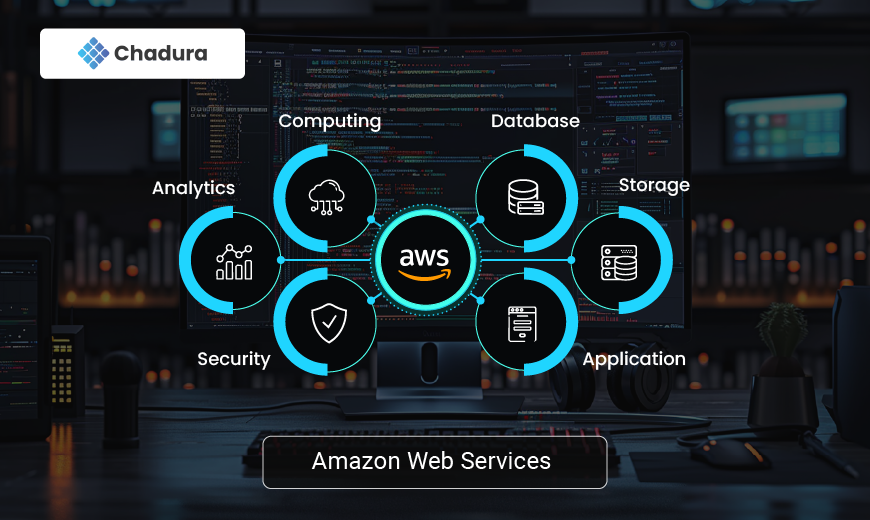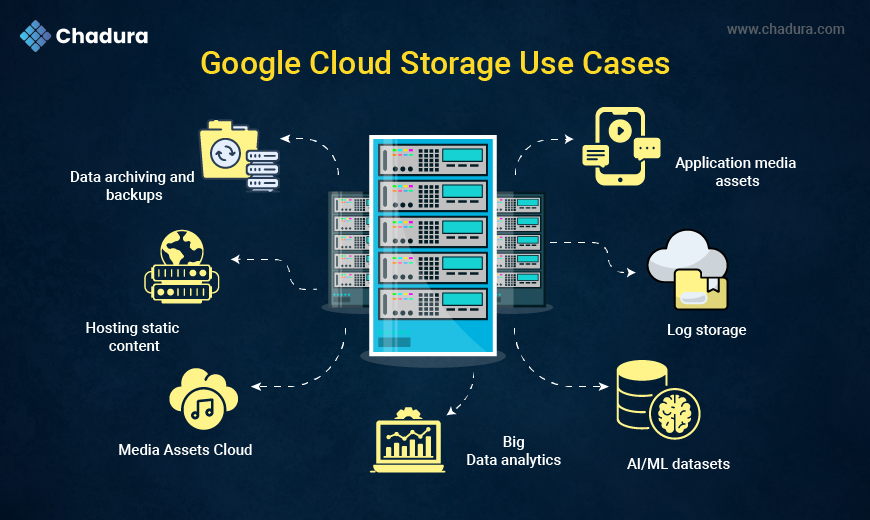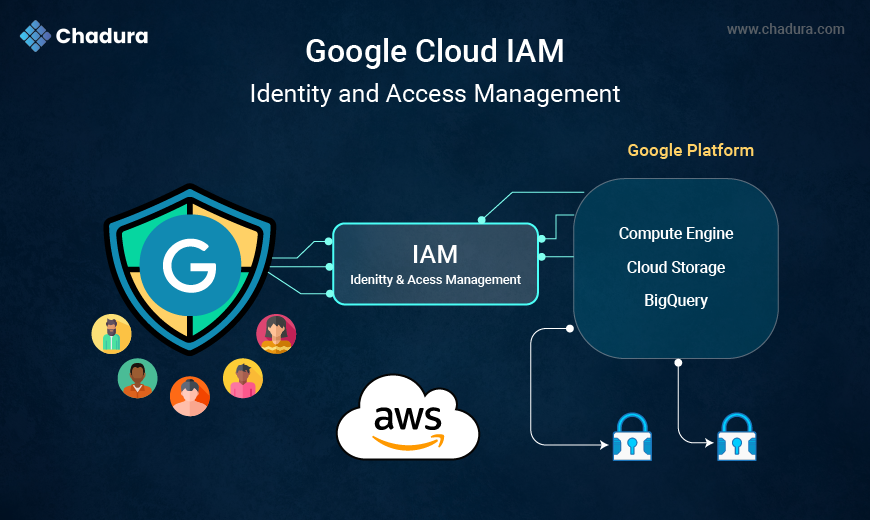AWS stands for Amazon Web Services, it needs no formal introduction, given its immense popularity. The leading cloud provider in the marketplace is . It provides over 170 AWS services to the developers so they can access them from anywhere at the time of need.
AWS has customers in over 190 countries worldwide, including 5000 ed-tech institutions and 2000 government organizations. Many companies like ESPN, Adobe, Twitter, Netflix, Facebook, BBC, etc., use AWS services.
What is Cloud Computing?
Cloud Computing is the delivery of online services (such as servers, databases, and software) to users. With the help of cloud computing, storing data on local machines is not required. It helps you access data from a remote server. Moreover, it is also used to store and access data from anywhere across the world.
AWS Meaning : The Amazon Web Services (AWS) platform provides more than 200 fully featured services from data centers located all over the world, and is the world's most comprehensive cloud platform. Amazon web service is an online platform that provides scalable and cost-effective cloud computing solutions. AWS is a broadly adopted cloud platform that offers several on-demand operations like compute power, database storage, content delivery, etc., to help corporates scale and grow.
How Does AWS Work?
AWS usually works in several different configurations depending on the user's requirements. However, the user must be able to see the type of configuration used and the particular server map with respect to the AWS service.
Advantages of AWS
- AWS provides a user-friendly programming model, architecture, database as well as operating system that has been already known to employers.
- AWS is a very cost-effective service. There is no such thing as a long-term commitment to anything you would like to purchase.
- It offers billing and management for the centralized sector, hybrid computing, and fast installation or removal of your application in any location with a few clicks.
- There is no
- AWS offers a total ownership cost at very reasonable rates in comparison to other private cloud servers.
Disadvantages of AWS
- AWS has supportive paid packages for intensive or immediate response. Thus, users might need to pay extra money for that.
- There might be some cloud computing problems in AWS especially when you move to a cloud Server such as backup protection, downtime, and some limited control.
- From region to region, AWS sets
- If there is a sudden change in your hardware system, the application on the cloud might not offer great performance.
Migration
Migration services use 3 different sub-services, DMS, SMS, and Snowball to transfer the data physically from Datacenter to AWS.
- DMS also known as Database Migration Service is used to migrate one database to another.
- SMS is a Server Migration Service that helps to
- Snowball is used to migrate data inside in terabytes to data outside within the AWS environment.
Applications of AWS
The most common applications of AWS are storage and backup, websites, gaming, mobile, web, and social media applications. Some of the most crucial applications in detail are as follows:
1. Storage and Backup
One of the reasons why many businesses use AWS is because it offers multiple types of storage to choose from and is easily accessible as well. It can be used for storage and file indexing as well as to run critical business applications.
2. Websites
Businesses can host their websites on the AWS cloud, similar to other web applications.
3. Gaming
A lot of computing power is needed to run gaming applications. AWS makes it easier to provide the best online gaming experience to gamers across the world.
4. Mobile, Web and Social Applications
A feature that separates AWS from other cloud services is its capability to launch and scale mobile, e-commerce, and API-driven code on AWS can enable companies to build uncompromisingly scalable applications without requiring any OS and other systems.
5. Big Data Management and Analytics (Application)
- Amazon Elastic Map Reduce to process large amounts of data via the Hadoop framework.
- Amazon Kinesis to analyze and process the streaming data.
- AWS Glue to handle, extract, transform, and load jobs.
- Amazon Elasticsearch Service to enable a team to perform log analysis, and tool monitoring with the help of the open-source tool, Elastic-search.
- Amazon Athena to query data.
- Amazon QuickSight to visualize data.
6. Artificial Intelligence
- Amazon Lex to offer voice and text chatbot technology.
- Amazon Polly to translate text-to-speech translation such as Alexa Voice Services and Echo devices.
- Amazon Rekognition to analyze the image and face.
7. Messages and Notifications
- Amazon Simple Notification Service (SNS) for effective business or core communication.
- Amazon Simple Email Service (SES) to receive or send emails for IT professionals and marketers.
- Amazon Simple Queue Service (SQS) enables businesses to subscribe or publish messages to end users.
8. Augmented Reality and Virtual Reality
- Amazon Sumerian service enables users to make the use of AR and VR development tools to offer 3D web applications, E-commerce & sales applications, Marketing, Online education, Manufacturing, Training simulations, and Gaming.
9. Game Development
- AWS game development tools are used by large game development companies that offer developer back-end services, analytics, and various developer tools.
- AWS allows developers to host game data as well as store the data to analyze the gamer's performance and develop the game accordingly.
10. Internet of Things
- AWS IoT service offers a back-end platform to manage IoT devices as well as data ingestion to database services and AWS storage.
- AWS IoT Button offers limited IoT functionality to hardware.
- AWS Greengrass offers AWS computing for IoT device installation.
AWS Pricing Model
AWS pricing model is very cost-effective which makes it most reliable. For instance, if a user wants to use a cloud server for an hour, AWS asks the user to pay only for an hour. There is no such long-term commitment as five years or 10 years and pay accordingly. Besides, there is an AWS free tier service to increase the potential customers' affordability by offering free services with AWS servers up to 58 products that help users gain some experience with the AWS platform.
Top Companies Using AWS
Whether it’s technology giants, startups, government, food manufacturers or retail organizations, there are so many companies across the world using AWS to develop, deploy and host applications. According to Amazon, the number of active AWS users exceeds 1,000,000. Here is a list of companies using AWS:
- Netflix
- Intuit
- Coinbase
- Finra
- Johnson & Johnson
- Capital One
- Adobe
- Airbnb
- AOL
- Hitachi
AWS Services
Amazon has many services for cloud applications. Let us list down a few key services of the AWS ecosystem and a brief description of how developers use them in their business.
Amazon has a list of services:
- Compute service
- Storage
- Database
- Networking and delivery of content
- Security tools
- Developer tools
- Management tools
Compute Service
Amazon EC2 is the fastest cloud computing service provided by AWS. It offers virtual, secure, reliable, and resizable servers for any workload. Through this service, it becomes easy for developers to access resources and also facilitates web-scale cloud computing. This comes with the best suitable processors, networking facilities, and storage systems. Developers can quickly and dynamically scale capacities as per business needs. It has over 500 instances, and you can also choose the latest processor, operating system, storage, and networking to help you choose according to the needs of the business. Also, with Amazon EC2, you only have to pay for what you use, and also, as per the time period, scaling with Amazon EC2 auto-scaling has optimal storage and can optimize CPU configurations.
Storage
A cloud computing provider that manages and runs data storage as a service provides cloud storage, a cloud that is a model for storing data online. It eliminates the need to purchase and manage your own data storage infrastructure because it is offered on-demand with just-in-time capacity and pricing.
Database
A database is an electronically stored, systematic collection of data. It can contain any type of data, including words, numbers, images, videos, and files. You can use software called a database management system (DBMS) to store, retrieve, and edit data. In computer systems, the word database can also refer to any DBMS, to the database system, or to an application associated with the database.
AWS databases are a set of managed database services supplied by Amazon Web Services that are intended to provide dependable, scalable, and secure database solutions for a variety of use cases. These services include Amazon RDS for relational databases, Amazon DynamoDB for NoSQL databases, Amazon Redshift for data warehousing, and Amazon ElastiCache for in-memory caching, among others. AWS databases include capabilities such as automatic backups, patching, and fast setup, allowing enterprises to focus on application development while AWS manages the database.
Networking
AWS networking services provide a comprehensive suite of tools designed to facilitate secure, efficient, and scalable network connectivity for cloud applications. These services work together to enhance application performance, security, and reliability while providing organizations with the flexibility to manage their networking needs effectively in the cloud.
Security tools
AWS Security Tools can be used to protect instances and AWS resources from cloud data breaches, safeguard business operations, and ensure user privacy. Managing AWS security is difficult since resources could be run on multi-cloud, hybrid, on-premises, and other environments. However, if you have the right policies, standards, migration, and implementation strategies, you can ensure security and enforce it consistently.
AWS security takes a layered approach and factors in all AWS resources the organization uses. It considers the following when designing a solid security strategy:
Understand your security requirements— Outline your policies, decide your budget, and ensure you document the security controls used.
Build the environment— Use AWS security tools and create a secure environment by leveraging AWS partner solutions and professional services. This will ensure high-quality audits and third-party checks and will make enforcing new policies much easier. Define AWS configuration features and encryption requirements, including security templates and rulesets.
Perform regular assessments—ensure continuous support and training for auditors and ensure the capabilities AWS cloud security tools and resources provide. Evidence collection for threat analysis, querying, sorting, searching, and managing AWS resources after security evaluations are necessary.
Developer Tools
AWS Developer Tools is a suite of services designed to streamline the software development process, enabling developers and IT operations teams to build, test, and deploy applications efficiently in the cloud. Key components include:
AWS CodeCommit: A fully managed source control service that allows teams to host secure Git repositories.
AWS CodeBuild: A continuous integration service that compiles source code, runs tests, and produces software packages ready for deployment.
AWS CodeDeploy: Automates application deployments across various compute services, ensuring consistent updates and minimizing downtime.
AWS CodePipeline: A continuous delivery service that automates the build, test, and release processes for applications.
AWS Cloud9: A cloud-based integrated development environment (IDE) that provides a rich code editor, debugger, and terminal for writing and running code from anywhere.
AWS Management Tools
AWS Management Tools encompass a suite of services designed to help users efficiently manage and govern their cloud resources. These tools facilitate the provisioning, monitoring, and automation of AWS infrastructure components, enhancing operational efficiency and compliance. Key services include:
AWS CloudFormation: Automates the setup and management of AWS resources using code, allowing users to model their entire infrastructure as a single source of truth.
AWS Systems Manager: Provides operational insights and management capabilities across AWS resources, enabling automation of common tasks and gathering operational data.
Amazon CloudWatch: Monitors AWS resources and applications in real-time, providing metrics, logs, and alarms to ensure system performance and health.
AWS Config: Tracks resource configurations and changes, enabling compliance auditing and security analysis by maintaining a detailed history of resource configurations.
AWS Service Catalog: Allows organizations to create and manage catalogs of IT services that are approved for use on AWS, ensuring compliance with organizational policies.





